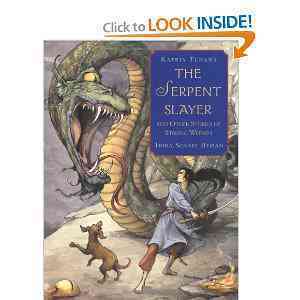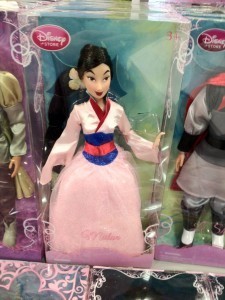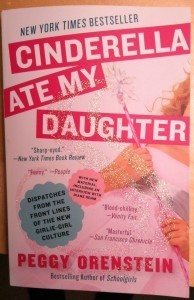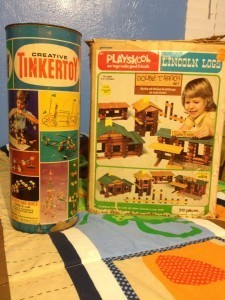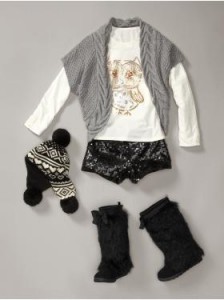Peggy Orenstein's Blog, page 8
February 5, 2012
In Which We Rescue the Fairy Tale
Before being co-opted by Uncle Walt (and, for that matter, the Brothers Grimm), the medieval, European fairy tales were a women's medium, an oral tradition shared over long hours of repetitive work, such as spinning (that's where "spinsters" comes from…). The tales were the entertainment of their day: the movies, the TV, even the porn (did you really think that Rapunzel and the Prince just talked in that tower?). The Grimms recorded the tales of their time and place, but as their compendium went through a variety of reprints–and as the stories became aimed at children–the brothers took out the sex (especially the pervasiveness of incest as the motivation for a heroine's flight) and amped up the violence. They figured, like many of the day, that scaring the beejezus out of kids would get them to behave.
Personally, I love fairy tales and there are those (such as Bruno Bettelheim) who insist that you should read them, gore and all, to even the smallest children. That makes this modern mommy queasy, but I do think they're great for older girls and I still love reading them as an adult. The Disney animators' brushes have painted the heroines as passive and the prince as the savior, but in fact, that's not how many of the story goes. There are some great tales of female feistiness, cleverness and heroics. Most are waaaaay to bloody for girls (some that aren't are on my resources page). But for those of you over, say, twelve, I'd suggest starting with the following, which you can find online, along with many others, at SurLaLune Fairy Tales:
Fairy and folk tales of female bravery can be found in every culture. Also check out Alison Lurie's book, Clever Gretchen and Other Forgotten Fairy Tales, some of which can be shared (or altered to share) with little girls.
My favorite physical version of the Grimms' stories is Maria Tatar's The Annotated Brothers Grimm. You can't beat it. Great on discussing women's roles as well. I'd also suggest Jane Yolen's Not One Damsel in Distress, The Serpent Slayer, and . Each has some stories within that are appropriate for little ones.
Start with those, then just keep on going! Enjoy!
Because I Love Fairy Tales
Before being co-opted by Uncle Walt (and, for that matter, the Brothers Grimm), the medieval, European fairy tales were a women's medium, an oral tradition shared over long hours of repetitive work, such as spinning (that's where "spinsters" comes from…). The tales were the entertainment of their day: the movies, the TV, even the porn (did you really think that Rapunzel and the Prince just talked in that tower?). The Grimms recorded the tales of their time and place, but as their compendium went through a variety of reprints–and as the stories became aimed at children–the brothers took out the sex (especially the pervasiveness of incest as the motivation for a heroine's flight) and amped up the violence. They figured, like many of the day, that scaring the beejezus out of kids would get them to behave.
Personally, I love fairy tales and there are those (such as Bruno Bettelheim) who insist that you should read them, gore and all, to even the smallest children. That makes this modern mommy queasy, but I do think they're great for older girls and I still love reading them as an adult. The Disney animators' brushes have painted the heroines as passive and the prince as the savior, but in fact, that's not how many of the story goes. There are some great tales of female feistiness, cleverness and heroics. Most are waaaaay to bloody for girls (some that aren't are on my resources page). But for those of you over, say, twelve, I'd suggest starting with the following, which you can find online, along with many others, at SurLaLune Fairy Tales:
Fairy and folk tales of female bravery can be found in every culture. Also check out Alison Lurie's book, Clever Gretchen and Other Forgotten Fairy Tales, some of which can be shared (or altered to share) with little girls.
My favorite physical version of the Grimms' stories is Maria Tatar's The Annotated Brothers Grimm. You can't beat it. Great on discussing women's roles as well. I'd also suggest Jane Yolen's Not One Damsel in Distress, The Serpent Slayer, and . Each has some stories within that are appropriate for little ones.
Start with those, then just keep on going! Enjoy!
January 28, 2012
Cinderella's Ball Gown Ate Mulan!!!!!
Oh my God, Cinderella's ball gown ate Mulan!!! No!!!!!!! The one Disney "princess" (though she is no princess and never marries a prince) I loved, the one I gave my daughter to stave off the others, the one I scoured ebay to find has been made pink and pouffy! Poor Mulan, this against everything the character stands for! It was bad enough that the old Mulan doll came wearing a hanfu, which, if you've seen the movie (as I have, approximately forty million three hundred and seven times) she despised. The hanfu (a Chinese kimono) was how they served her up hoping she'd bring "honor to us all" by being pretty and marrying well.
But Mulan didn't want to do that, even before she snuck off to join the military. She always wanted to be her own person.
Anyway, Rebecca Hains, whose book Growing Up With Girl Power just came out, took this pic of the old Mulan:

And NOW look at her:
Pinker, pouffier, sparklier (Rebecca thought of the headline on this post, too). I'd like to remind the Disney people of the song that THEY put in Mulan II and is still one of my favorites:
Meanwhile, Rebecca took photos of the other dolls as well, noting that they'd all had sparklified remakes. They did resist putting Pocahontas in a ball gown (though the've tried before); she does, however, have inexplicably high-heeled feet. And sparkles. And rounder eyes. AND LIGHTER SKIN. Especially as the mom of a brown girl, I'm with Rebecca on this one—TOTALLY uncool, Dudes.
Anyway, bear with me here as I free associate. Because I was thinking about all of this while reading an article in HuffPo about a study by MIT Economist Esther Dufflo. Dufflo traveled to 495 villages in India to determine whether there was a gap in parents' expectations of their female and male children. Here's what she found: in villages that never had female political leaders parents were 45% less likely to expect their daughters to go to high school. The girls themselves were 32% less likely than boys to believe they'd continue their education. In villages where female leaders routinely served in local government, however,—such as in the state of West Bengal, where for two decades a third of local posts were specifically reserved for women—parents had the same educational expectations for their daughters as for their sons. The girls themselves had higher expectations s as well. Given the importance of girls' education to ameliorating global poverty, this is vital information. The study's author attributes her findings to "the role-model effect." "Perceptions and giving hope," Dufflo said, "can have an impact on reality."
I know we're not India, but when all our little girls see are princesses and divas–and they see very few women in leadership in business, politics, STEM or the arts–what is our role model effect? Ponder this, for example: according to the latest Celluloid Ceiling report, women account for just 5% of directors working in Hollywood, down from 10% in 1998, when the number peaked. Meanwhile, only 14% of Hollywood writers, 18% of executive producers, 25% of producers, 20% of editors and 4% of cinematographers are female.
Don't believe this under-representation has an impact on how and whether women and girls are portrayed on-screen? Check out the new material in the paperback of Cinderella Ate My Daughter, or take a look at the magnificent Geena Davis Institute on Gender in Media.
And finally, for those of you who've read this far, I want to thank you for making Cinderella Ate My Daughter a success. The paperback doesn't come out until Tuesday, but they've already gone back to press! The pre-orders have been through the roof. I'm so grateful and thrilled that the book's message of broadening images and opportunities for BOTH boys and girls is getting heard! Please check my events page (if you haven't already) and come out and say hi if I'll be in your town.
Also: I've updated the resources page on how to "fight fun with fun!"
January 18, 2012
Say "Nay!" to "My Little Pony" Talking Princess Celestia Doll!
Rebecca Hains, best be known these days as the woman who got busted by the TSA for trying to take a red velvet cupcake through airport security, is, in her real life a media studies professor at Salem State University and author of Growing Up With Girl Power; Girlhood on Screen and in Every Day Life. She is also mother to a little boy who loves "My Little Pony," a show, Rebecca says on her blog, that, like the beloved Powerpuff Girls, appeals equally to both sexes, defying the notion that boys/men won't watch stories about girls/women.
I have to admit I'm not a "My Little Pony" aficianado—my daughter was never into them and I recalled the old show as being inane, and largely about selling toys (the fact that the ponies were revived for the Hub, a TV station owned by Hasbro, and are skinnier and "prettier" in their new incarnation only reinforced those impressions). Creator Lauren Faust writes on the Ms. Magazine blog that she was not initially a fan, either:
[Shows based on girls' toys] did not reflect the way I played…I assigned my ponies and my Strawberry Shortcake dolls distinctive personalities and sent them on epic adventures to save the world. On TV, though, I couldn't tell one girl character from another and they just had endless tea parties, giggled over nothing and defeated villains by either sharing with them or crying–which miraculously inspired the villain to turn nice.
With her new MLP, Faust claims she wanted to challenge "the perception that 'girly' equals lame or "for girls" equals crappy," to show:
there are lots of different ways to be a girl. You can be sweet and shy, or bold and physical. You can be silly and friendly, or reserved and studious. You can be strong and hard working, or artistic and beautiful. This show is wonderfully free of "token girl" syndrome, so there is no pressure to shove all the ideals of what we want our daughters to be into one package. There is a diversity of personalities, ambitions, talents, strengths and even flaws in our characters–it's not an army of cookie-cutter nice-girls or cookie-cutter beauty queens like you see in most shows for girls.
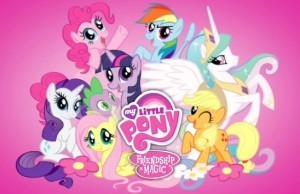
Whether you agree or not, I wonder how Faust feels how her attempt was distorted on the way to the toy shelves, turned into the very thing she once despised. Consider Talking Princess Celestia, whom you'll notice in the link is advertised as a toy that will "encourage your child's imagination." On the show Celestia is a white horse who rules the ponies wisely and well. But–uh-oh!–in the toy store she's turned pink! And what does pink usually mean? Well, Rebecca pressed Celestia's "cutie" button (gag gag) to find out:
Let's recap: FIVE of Celesita's twelve comments are about appearance ("I love when you comb my hair!" "Oh, my hair looks beautiful." "My wings are so pretty!" "My barrettes look so pretty!" "You're beautiful"); two are about princesses; two are about friendship; two relate to activity ("Let's fly to the castle!" "I will light the way!") and one is the word "Spectacular!"
As Rebecca points out, that means when a child plays with this Princess Celestia toy, he or she will be bombarded with self-absorbed, pretty princess vanity, the kind, she says, the show is, happily, free of.
Why'd Hasbro do it? The same reason Nick makes the bizarrely-named Magic Hair Fairytale Princess Dora doll: they think they'll make a buck. only we parents can prove them wrong.
Incidentally, Celestia was originally supposed to be a QUEEN, not a princess, but according to Faust:
I was told [by Hasbro] that because of Disney movies, girls assume that Queens are evil (although I only remember 1 evil queen) and Princesses are good. I was also told that the perceived youth of a Princess is preferable to consumers.
She does not have parents that outrank her. I brought the weirdness of that situation to my bosses, but it did not seem to be a continuity concern to them, so I'm letting it alone. I always wanted her to be the highest authority, and so she remains so. And I certainly don't want marriage to be what would escalate her. (Bad messages to girls and what not.)
[...] I put up a bit of a fight when her title changed, but you win some, you loose some.
Indeed.
Rebecca suggests a few substitutions for the doll's script. How about:
I'm a princess! I rule my country with wisdom.
I love teaching my students. Do you love school?
You're so smart!
You remind me of Twilight Sparkle, my best student.
You're beautiful outside and in
Together, we can do anything!
A propos of that last phrase: if you're interested in letting Hasbro know we want our girls to think, play and be something beyond pretty, pink princess, here's Rebecca's petition at change.org.
January 9, 2012
Please Judge this Book By Its Cover!
Just got a copy of the Cinderella Ate My Daughter paperback, hot off the Harper Press. Looks so eye-catching–and they kept the sparkles!
I'll write more about real stuff soon (busy time) but just wanted to post this. I'm such a proud Mama…..
Oh, and it's in stores Jan 31. If you live in one of the cities I'm visiting, please come say hi!
December 31, 2011
Of Legos and Lincoln Logs, Or: Whatever Happened to 1972?
In the wake of my recent NY Times editorial on nature, nurture, gender and the new Lego Friends line, a reader sent me this photo of the gifts she and her husband gave their 5-year-old son this Christmas: her husband's old Lincoln Log and Tinker Toy sets. He was born in 1972. He (the husband/father) was born in 1972.
The Tinkertoys package explicitly states, "For boys and girls." And note the girl happily building a ranch on the cover of the Lincoln Logs!
Their son's response: "I didn't know these were for girls, too!" Point made (my point, that is).
FYI, you can still get gender-neutral Lincoln Logs (with pictures of cabins on the box, no kids shown). But there is also this set:
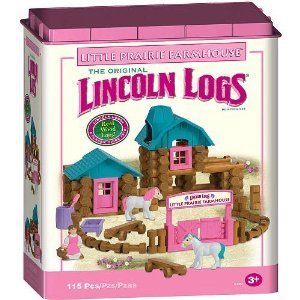
Again, necessary? Why? How does it affect the potential for boys and girls to interact? Play together? Is it relegating girls to pink and pretty or just meeting them half-way?
You can also get a girls' version of "classic" Tinker Toys.
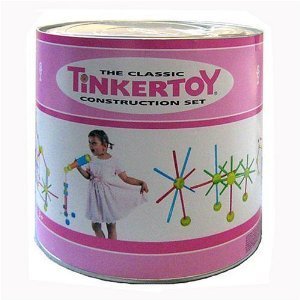
It allows them to construct, "a flower garden, a butterfly a microphone and more!"
Among other things I wonder: what's the microphone got to do with it?
December 14, 2011
Disney Agrees: Princesses are Unhealthy for Girls!
Did Disney blink in releasing its new "age-appropriate" Sofia the First princess character and TV show? If Sofia is deemed "just right" for preschoolers, after all, wouldn't that mean the now re-labeled "adult" princesses…aren't? Yet for the past ten years, the Princess concept has been sold (and sold and sold) to the exact same demographic with the Disney assurance that they are "developmentally appropriate," "safe," and imparting good values. No more. Sofia, they assure us, won't be about romantic fantasy. She won't need a prince to make her happy, a message that, according to one report Disney recognizes as a "legitimate worry" for parents and a "bad message for little girls." Yet when I spoke with Disney execs while reporting Cinderella Ate My Daughter, they poo-pooed my concern, insisting that the romantic story lines and passive heroines of "Cinderella," "Snow White," "Little Mermaid" etc.–which, again, they were shilling to the very same preschool girls they now say need rescuing from that message–were harmless fun. Can they have it both ways?
At the time, execs also told me that Princess was not I repeat not only about the dresses, makeup, bling and Kardashian-sized materialism. Or the $4 billion annually Princess pulls in for the company. No. Disney Princesses were about kindness and compassion and values.
Hey, guess what they're saying about Sofia? She will, according to a Disney Jr. exec, have "plenty of pretty dresses and sparkly shoes," but her REALY purpose is to teach viewers that "what makes a real princess is what's inside, not what's outside." Unlike, say, what the other princesses have been teaching viewers for all these years?
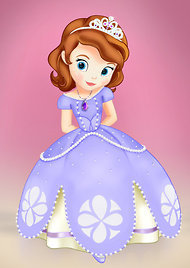
So I wonder, does that mean Disney won't be selling any of Sofia dresses, crowns, ways or other merch, so they can reinforce the idea that she's all about the inside?
Not hardly.Disney is nothing if not cynical. And greedy.
Obviously Sofia is all about the dresses and the shoes. If not, they could have made her an astronaut or, I know….an explorer!!! Oh, wait, we have that already.I wonder whether Dora would have been possible in today's princess-obsessed culture. Especially given that Dora herself has both gone princess and undergone a makeover.
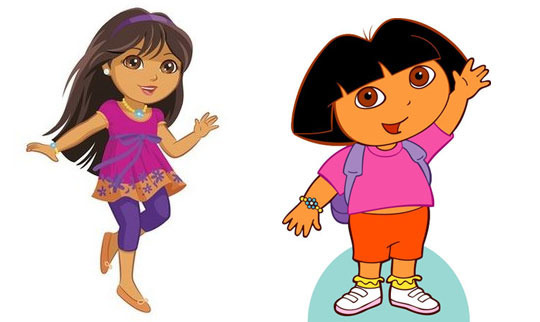
Maybe if Disney (or Nick, or Sesame Street Workshop or, gosh, anyone) had 10 other "age appropriate" female characters who were not princesses; maybe if they had a female character whose appeal did not depend on her prettiness (because make no mistake—Sofia is very pretty and weirdly coy and, not for nothing, totally white and that is part of the package); maybe if they didn't continually reinforce to girls at ever-younger ages that how you look is who you are while claiming to do just the opposite (witness the Tangled Escape From the Tower Lip & Nail Set! and the Princess with a Loving Heart Make-Up Kit.); maybe if they didn't prime them for premature sexualization while claiming to protect them from it; maybe if they didn't exploit little girls' fantasies and turn imagination into something to be scripted and sold; maybe if they didn't provide the first entrée for so many of the issues I write about on this blog (and in Cinderella Ate My Daughter); maybe then I would feel less disgusted by this latest move. Instead, it just feels like the latest predatory example of Disney reaching for the crib.
Meanwhile, I'm still waiting for the company to come out with a Snow White coffin. They're missing a major womb-to-tomb branding opportunity.
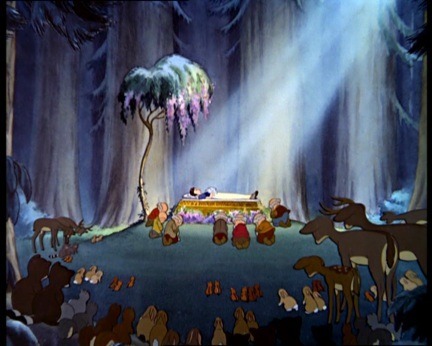 o
o
Wait! Wait! One more thing–you want a great princess story? I'll give you one. Just in time for the holidays. The Princess and the Pig. It looks hysterical–and right on. And you can bet it won't be used to sell your 3-year-old lip gloss!
November 30, 2011
Science Sans Sexism
The very first blog post I ever wrote was about the Mindware catalog's spa science kit and its not-so-tacit message to little girls. As I go around the country giving talks I now show a series of pictures from similar "science kits for girls" (which are flooding the market) to illustrate how they're designed less to teach interest in that subject than to cultivate an obsession with beauty and consumerism. Janet Stemwedel at Scientific American just wrote a great blog post about this. She talks, for instance, about this–yet another "Spa Science" kit:
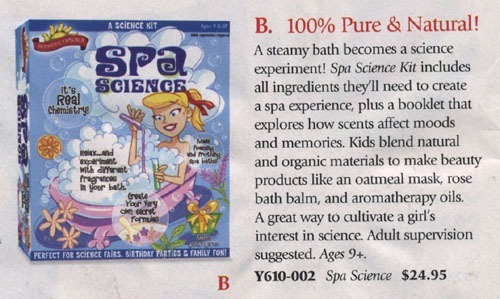
…the packaging here strikes me as selling the need for beauty product more emphatically than any underlying scientific explanations of how they work. Does a ten-year-old need an oatmeal mask? (If so, why only ten-year-old girls? Do not ten-year-old boys have pores and sebaceous glands?)
…Maybe the Barbie-licious artwork is intended to convey that even very "girly" girls can find some element of science that is important to their concerns, but it seems also to convey that being overtly feminine is a concern that all girls have (or ought to have) — and, that such "girly" girls couldn't possibly take an interest in science except as a way to cultivate their femininity
There are so many of these kits on the market today. This one, for instance:
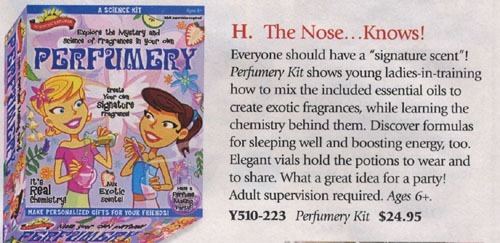
And this one:
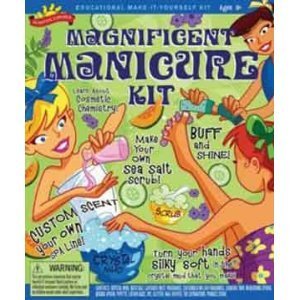
And this one:
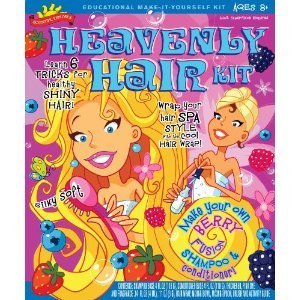
The company Wild Science is kind enough to break their products down on "boys" and "girls" pages, just for those of us who may not be able to determine who is supposed to get the "perfume science" kit and who is supposed to get the (I kid you not) "physics and chemistry" kit. Please. Click on the links. You have got to check them out. Go ahead. Compare and contrast. I'll wait.
Are you back? Are your teeth still in your head? I especially love that boys get "chemistry and physics" and girls get "perfect perfume lab."
Oh, wait–Wild Science ALSO has a whole section called "cosmetic science" featuring a "Pampering Boutique" for girls ages 8+ that "puts all the 'good' ingredients back in the skin after a tiresome day at school." Bonus points for reinforcing alienation from education (and that "pretty" and "smart" are incompatible!!)
[image error]
Other "cosmetic science" products? Clay Mask Lab; Cleansing Boutqiue; Cosmetic Cream Lab; Enhancing Boutique (perhaps experiments involving botox?); Purifying Boutique and Shampoo Factory.
It's not just science kits, either. Craft kits, which once promoted art or, I don't know, at least CRAFT have also become focused solely on appearance. Faber-Castell, a venerable, 250 year old art supply company, owns Creativity for Kids whose craft kits for girls include the following:
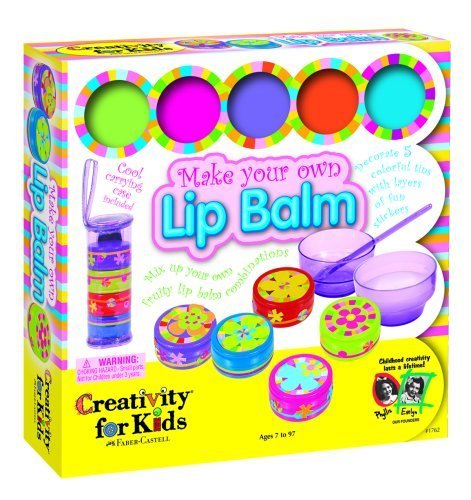
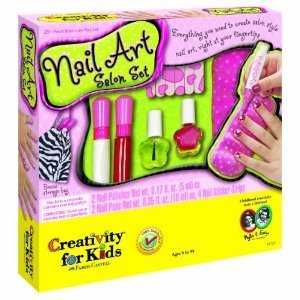
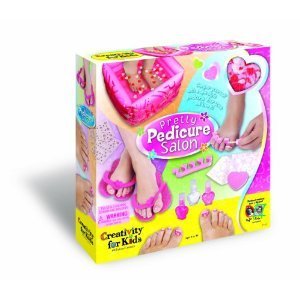
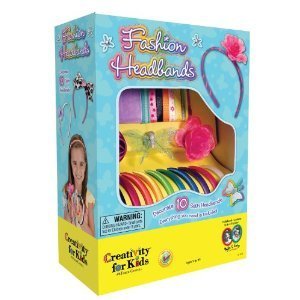
There are so many of these cosmetic-fashion-jewelry craft kits I could go on forever. Look 'em up.
So imagine, for a moment: you're in third grade and you wake up on Christmas morning or light the Channukah candles on consecutive nights and as a budding scientist you get a perfume science kit. And then you open the next gift and because you're interested in art you get a fashion angels project runway kit. And then because you do love dolls you get Frankie Stein from Monster High. What is the larger message those gifts are giving? According to Stemwedel:
The message seems to be, "Look, there's a bit of science that will interest even you. (And go put on some lipstick!)" Heaven knows, we couldn't even get girls interested in building Rube Goldberg machines, or launching water-rockets, or studying the growth of plants or the behaviors of animals, or blowing stuff up … except, these are just the sort of things that the girls I know would want to do, even the pretty pink princesses.
She suggests if your little girl–or boy–is into science, you should check out the kids pages on the American Chemical Society site. There you will find hand-on activities (using stuff you probably have around the house) such as nine fun experiments with soap and detergent. And here's a list of books and books and books full of science experiments that any child would love.
Merry Merry.
November 18, 2011
Crotchless Panties and GAP short-shorts
By now you've all heard about the Colorado mall store "Kids and Teens" that was selling crotchless thong panties for 7-year-olds (in addition to everything else, how does a crotchless thong panty WORK, exactly, I mean engineering-wise? I don't get it). It's unfathomable that someone came up with that product. It's unfathomable that some buyer in Colorado thought it was, what, cute? A good idea to put in a store? And the store's abhorrent defense was that it somehow got in there because they also sell items to teens. As if it would be somehow understandable if they were marketing crotchless thong panties (heretofore known as CTP) to your 13-year-old. Or your 15-year-old. Or your 16-year-old. And why should "kids" be shopping in the same store as "teens" to begin with? Is that appropriate?
Obviously, this particular incidence of age compression was so far over the line that parents flipped out, the media got on board, and the product was pulled. So the story ended similarly to the Abercrombie push-up bikini episode or the J.C. Penney's "I'm to pretty to do homework so my brother has to do it for me" t-shirt debacle or the KIA kiddie-porn ad.
But you can bet there will be more of these scandals. They pop up nearly weekly, whether it's lingerie for 10-year-olds, the hyper-sexualized rendering of Dakota Fanning in a perfume ad, Botox for baby beauty queens or Walmart's makeup line for 8-12 year olds (don't worry, Mom, it's non-toxic!). When they do pop up, much hand-wringing and righteousindignation ensues and I'm all for that. But I'd urge you to remember these do not and can not happen in a vacuum. There is a continuum of products and images marketed to girls and their parents that made these obviously over-the-line items POSSIBLE. The risk of focusing on the Big Bad is that we become desensitized to the every day.
Consider, for example, this outfit from the current GAP "North Star" girls' collection.
Under the amusing headline, "Gap Kids Recommends Little Girls Eschew Pants This Winter" a Jezebel blogger writes:
I'm not sure what's more WTF about it — the weird insistence on "sexiness" or its stunning lack of practicality. What's a kid supposed to do with an outfit like this? Not go sledding, snow angeling, or ice skating, that's for damn sure. The implied sweater-wearing also means that more high energy indoor activities, like discoing or, uh, present opening would render the wearer sweaty. This is just a recipe for un-fun times.
I suppose this is what happens when five-year-olds are allowed to dress themselves using only Bratz clothing.
Does this fall into the CTP category? No. But it does fall into the nearly 25% of clothing for girls aged 6-12 that contains elements that are both childlike and sexualized. As I've written before, citing a study released last summer, only 4% of girls' clothing is fully, overtly sexualized (the CTP being a case in point). I don't know who, beyond Mickie Wood, is buying that stuff. And nearly 2/3 of girls' clothing is considered entirely childlike. It's this 25% (more in stores like Abercrombie Kids and Justice) that mixes the message that I consider most toxic. Those are the things, to my mind, we REALLY need to examine and protest–and the mash-up is what makes that so hard to do.
Must go. Dog is chewing my desk. Happy Thanksgiving everyone!
November 13, 2011
Why Princesses Won't Be Presidents
Somehow I missed last spring's report from the commission on undergraduate women's leadership at Princeton. It seems one of the more important and damning pieces of research on gender to come out in a while. Was there a huge fuss and I was so busy with post-book publication that I missed it? Or maybe it came out during the two weeks I was out of the country.
Anyway, here's the deal: over the last ten years, for the first time in the history of the university as a co-educational institution, there has been a significant decline in the number of female students holding major campus leadership positions–something that, as the report's authors note, is not unique to Princeton. Plenty of elite colleges have taken their turn in the spotlight for their hostile environments towards women. (Yale, for instance, and MIT, which has undertaken a series of reports on the status of female faculty avaliable here.)
So, kudos to Princeton, first off, for having the courage to name and try to address the trend. I suspect the fact that the university has a female president made a difference in this respect. And that is as good an argument as any for diversity (of all sorts) among our leaders. Yet, apparently that urgency is not felt by the next generation. What gives?
One finding was that female students (speaking generally, of course) appear to value "high-impact" over "high-profile" roles. That may sound superior –women rise above mere show-boating–but not when it forecloses opportunity. Women, according the commission found, don't put themselves out there. They also undersell their talents compared to men and are prone to making self-deprecating or dismissive remarks about their achievements. What's more, they do much of the heavy lifting for the organizations to which they belong even as they eschew the credit.
Plus ca change, yes?
The commission also found a renewed and growing confidence gap between women and men on campus (remember that one?). It was somewhat present among incoming freshman, then widened as they moved forward (I'm sure parents paying $200K plus for their daughters' education were thrilled to hear THAT one).
But this wasn't just a matter of psychology and self-sabotage. According to one news report the commission was disturbed to discover that, "both alumnae and current students told us that they had been actively discouraged from running for the most prominent roles, We heard that often enough to be sobered by it."
Sexism isn't pretty, is it? And speaking of pretty, here was another reason cited for women's reluctance to lead:
Undergraduate women at Princeton today sometimes feel that they are expected to measure up to an impossible standard. They are supposed to be smart, involved in many different activities (as are men) and ALSO "pretty sexy, thin, nice, and friendly,"
Or, as an alumna put it in a great Daily Beast article, "there is too much pressure to do everything, do it well & look hot while doing it."
Sounds more like Princess than Princeton doesn't it?
Again, I don't think this issue is unique to Princeton. Nor do I think it's a coincidence that this decline began in 2000. That year marked the start of a profound shift in the culture of girls, when a silent "as long as you look hot doing it" was grafted on to the mantra "you can do anything." That message has become more pervasive and skewed younger since then (hey, someone should write a book about that–oh wait! I did!).
Ready for the double bind (or is it triple? Quadruple? I lose track). It appears that while Princeton women don't feel they can be taken seriously UNLESS they're hot, they also can't be taken seriously if they're too hot. This fall, a freshman running for class president posted a campaign video on YouTube. Here's a description by one of his classmates in the school newspaper:
[He] is sitting in a leather armchair wearing a bathrobe and holding a drink. He addresses the camera and announces his candidacy. Then, a girl wearing only boxers and a men's button down shirt enters — the boy shoots her a glance in annoyance. The girl seats herself on his armchair, flips her long, blonde hair and whines, "Come back," to which he shakes her off, saying, "I'll be back in a second." She exits, and then he looks back at the camera, shakes his head and rolls his eyes as if to say, "That silly bitch."
Incidentally, t only 1 of the 9 candidates for freshman class president was female; all the candidates for secretary were.
Consider this: two of the last three Supreme Court Justices appointed were Princeton women (the third was a Princeton man). Could the school produce an Elena Kagan or Sonia Sotormayor today?
On a related note I saw Miss Representation last night. Have you seen it? You must. Here's the extended trailer.
The Princeton report offered a few recommendations, including the importance of outreach and mentorship. You can read the summary here.
Peggy Orenstein's Blog
- Peggy Orenstein's profile
- 722 followers


